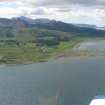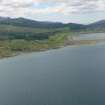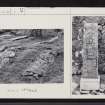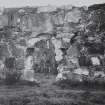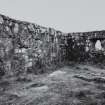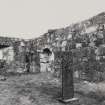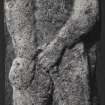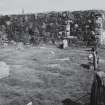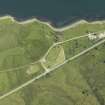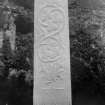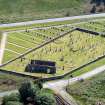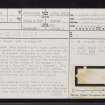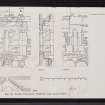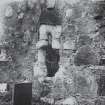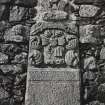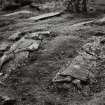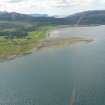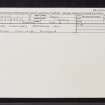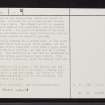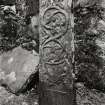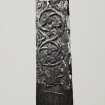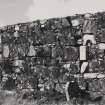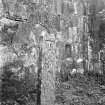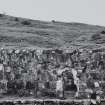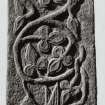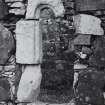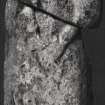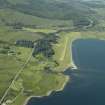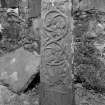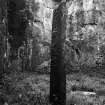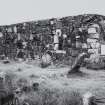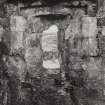Mull, Pennygown, Caol Fhaoileann, Chapel And Graveyard
Burial Ground (Period Unassigned), Chapel (Period Unassigned), Cross (Period Unassigned)
Site Name Mull, Pennygown, Caol Fhaoileann, Chapel And Graveyard
Classification Burial Ground (Period Unassigned), Chapel (Period Unassigned), Cross (Period Unassigned)
Alternative Name(s) Penny Gowan; Torosay, Chapel
Canmore ID 22462
Site Number NM64SW 1
NGR NM 60415 43251
Datum OSGB36 - NGR
Permalink http://canmore.org.uk/site/22462
- Council Argyll And Bute
- Parish Torosay
- Former Region Strathclyde
- Former District Argyll And Bute
- Former County Argyll
NM64SW 1 60415 43251
(NM 6041 4325) Chapel (NR) (remains of)
OS 1:10,000 map, (1976)
Chapel, Pennygown: This ruined chapel, which served the N portion of the parish of Torosay, is probably of early 13th century date. No medieval references to it have been identified, and its dedication is unknown. The records of the Synod of Argyll in the middle of the 17th century show some uncertainty as to the status of the charge; it is referred to both as a 'Chappell' and as a 'paroach'. The building may already have been derelict at this period, although the earliest evidence of its condition dates from 1787 when it was shown as 'an old kirk' on a map of Torosay parish.
The chapel, which measures 11.9m from E to W by 5.4m transversely within walls varying from 0.7m to 0.9m in thickness, is constructed of rubble masonry with freestone dressings. At some period the gables have been reduced to the same height as the side-walls, which are intact to wall-head level. Entrance was by a door placed towards the W end of the N wall. The chapel was lit by opposed windows at the E ends of the side-walls, and by a third window in the W wall. Two pairs of corbels in the side-walls W of the entrance-doorway were probably inserted in the late medieval period to support a gallery.
Within the chapel, erected on a modern base, is the lower part of a cross-shaft 1.33m high above ground. On the front there has been a Crucifix; below this a large plant scroll terminates in a griffin. At the foot is a galley with sail set. The decoration on the back is dominated by a figure of the Virgin and Child in high relief. This cross (which is also scheduled) dates to between 1500 and 1560.
In the graveyard, on the S side of the church, are two 17th century slabs, each 2.00m in length, bearing full-length effigies of a man and woman. (A number of 18th century funerary monuments, also in the graveyard, are described by the RCAHMS {1980}.)
Chapel revised at 1:10,560.
Visited by OS (DWR) 3 May 1972; RCAHMS 1980, visited 1973.
Field Visit (26 July 1942)
This site was recorded as part of the RCAHMS Emergency Survey, undertaken by Angus Graham and Vere Gordon Childe during World War 2. The project archive has been catalogued during 2013-2014 and the material, which includes notebooks, manuscripts, typescripts, plans and photographs, is now available online.
Information from RCAHMS (GF Geddes) 4 December 2014.














































